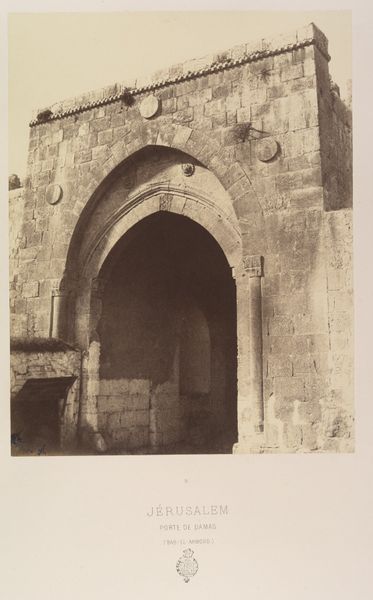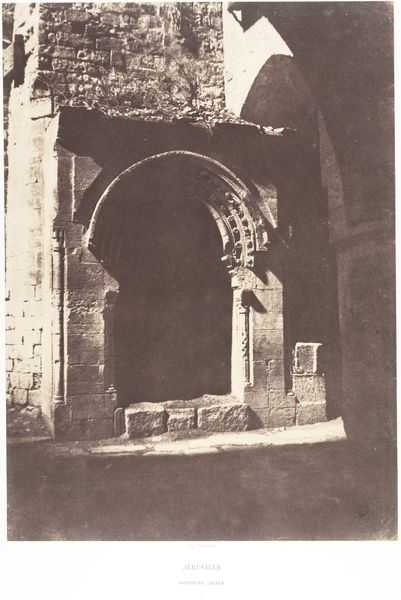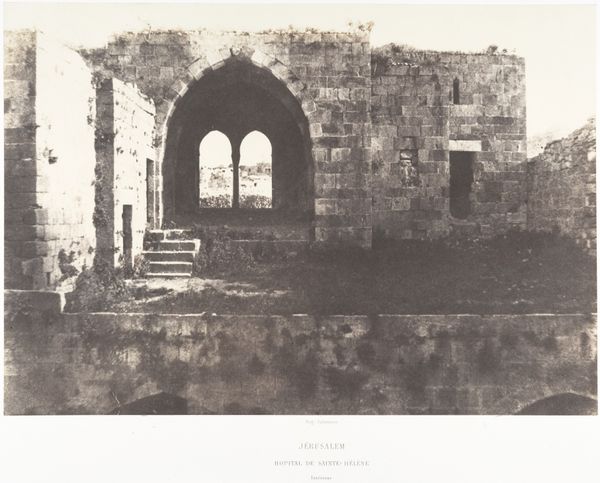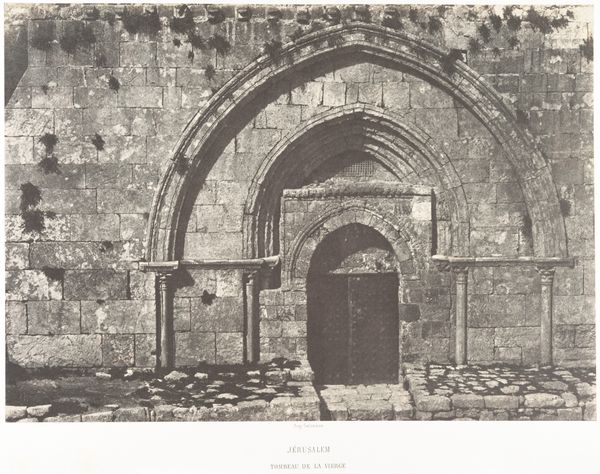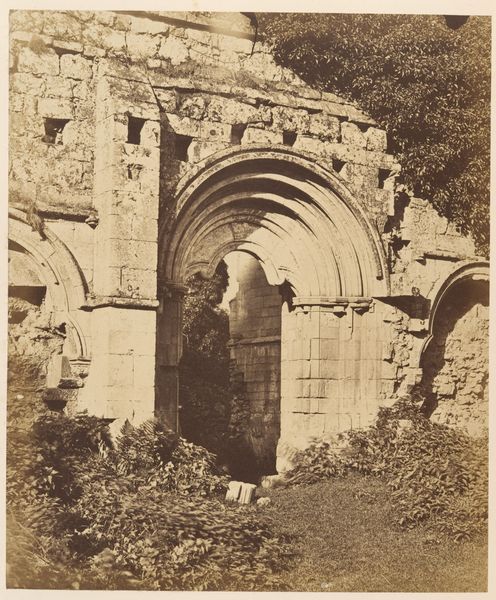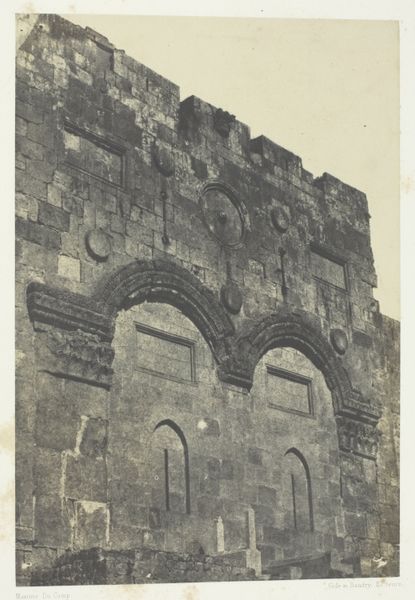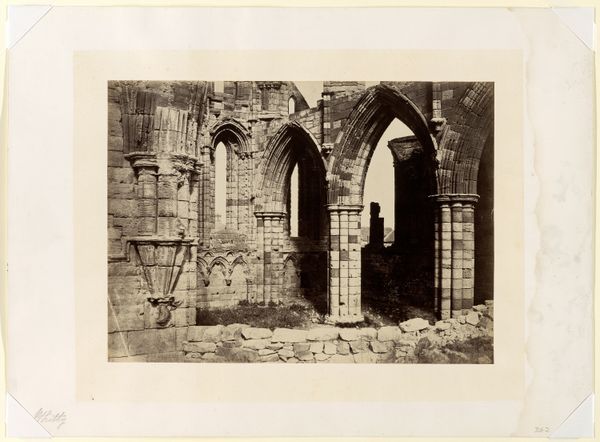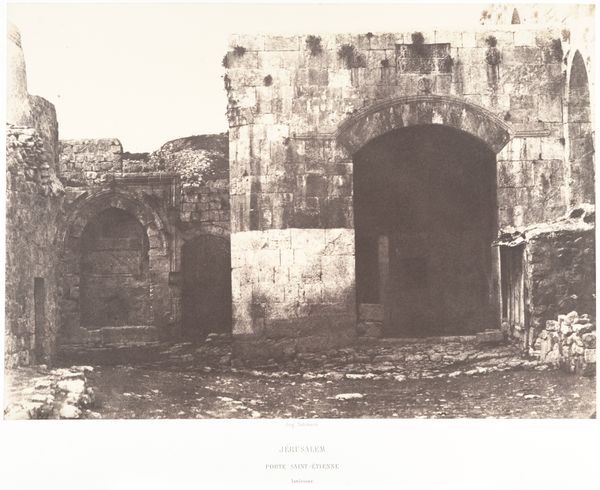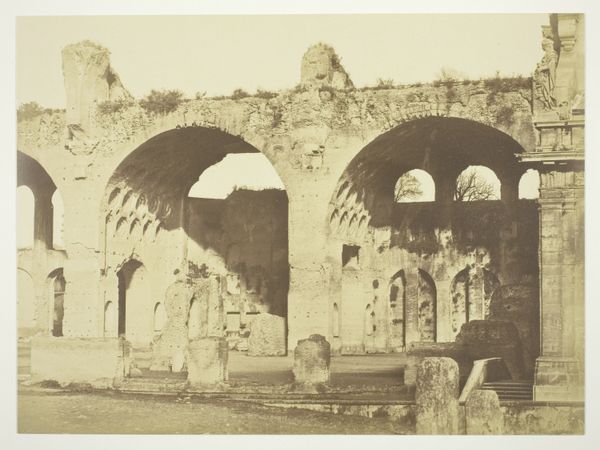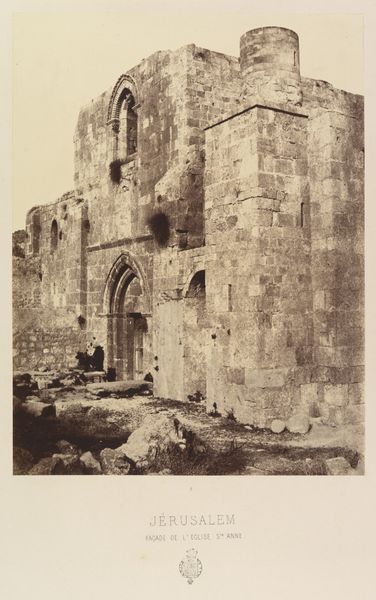
Jérusalem, Détails de la porte d'un Dôme sépulcral 1854 - 1859
0:00
0:00
daguerreotype, photography, architecture
#
landscape
#
daguerreotype
#
photography
#
arch
#
history-painting
#
architecture
#
realism
Dimensions: Image: 23 x 32.8 cm (9 1/16 x 12 15/16 in.) Mount: 44.8 x 59.9 cm (17 5/8 x 23 9/16 in.)
Copyright: Public Domain
Curator: Here we have Auguste Salzmann's "Jerusalem, Details of the door of a Sepulchral Dome," a daguerreotype created between 1854 and 1859. Editor: It strikes me immediately with its somber and decaying mood. The light feels harsh against the pitted stone, the strong architectural form against clear deterioration. Curator: Indeed. The interplay of light and shadow is key to its formal qualities, wouldn't you agree? Salzmann’s masterful use of the daguerreotype process allows for an intense focus on texture—every subtle erosion is highlighted, lending the structure a monumental weight, emphasized by the arch's construction. Editor: Certainly. And consider this within the historical context of mid-19th century photographic documentation. Salzmann was commissioned to photograph the Holy Land; to essentially provide visual proof and validate religious texts. The political implications are considerable, where archaeology and religious narratives intersect. It suggests more than the artistry alone. Curator: That historical layering undeniably impacts our interpretation. Yet I'm drawn to how the composition isolates the doorway—the arch as the central form, drawing our eye inexorably to the obscured space beyond. There is almost a spiritual framing here, achieved through solely formal means. Editor: I see it, but wonder, at the time, if viewers might have understood such compositions to suggest a particular narrative regarding sacred space and colonial intent. Does this image affirm the contemporary claims and counterclaims of the territory being documented? It transcends pure aesthetics into active social documentation. Curator: Perhaps, yet isn't there also inherent drama within its visual binaries: light and shadow, the permanence of stone versus nature's decay? These formal tensions elevate the image beyond mere representation into something more evocative. Editor: An important perspective! Ultimately, this work invites viewers to delve into its historical and aesthetic depths. It reveals a confluence of artistic skill, historical moment, and powerful social currents that persist to the modern day. Curator: Precisely, an image that speaks both to its time and to ours. Thank you for lending your illuminating perspectives.
Comments
No comments
Be the first to comment and join the conversation on the ultimate creative platform.
